While the digital trend may seem to add remarkable twist, what seems to be just a person's hobby in photography could kindle the spark for a new career break. - Scott Sohr
Low-Tech Cameras; Fine Art, Or Just Plain Fun
Low-tech cameras, a.k.a. toy cameras, a.k.a. plastic cameras, a.k.a. “you can’t be serious” cameras, have been around for a very long time. The first one to seize the imagination of fine art photographers was the Diana camera. First made in Hong Kong circa the 1960s, the Diana gained legitimacy in ’80 when The Friends of Photography, a not-for-profit founded by Ansel Adams and his associates in Carmel, California, held a group show of work exclusively made with the camera. The Diana, which originally sold for less than $10, had already ceased being made at the time of the show. Even so, the legend of the Diana continues to this day, and no other low-tech camera has quite captured the imagination of “toy camera” devotees. (A working replica, the Diana+, is now available.)
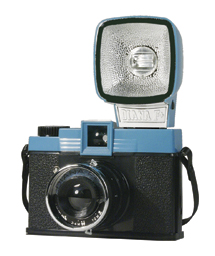 |
|
|
|
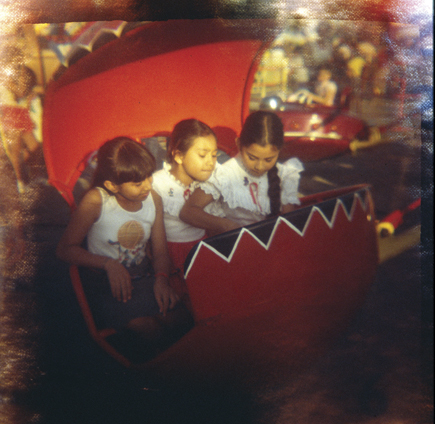 |
Low-tech cameras are for everyone, effectively bridging the gap between film and digital photographers. They are the one camera any photographer can use to improve their vision while having fun—that elusive activity which got us into photography in the first place.
There is almost nothing you will ever do that will improve your ability to see more than a low-tech camera. A point-’n-click, as I call them, these photographic tools do nothing except record what you see. There is no auto white balance, exposure compensation, aperture priority, Program mode, auto advance, no histogram…no nothin’. Just you and your subject. To zoom in you walk closer, to zoom out you lean backward. Autoexposure is “click.” You are automatically exposed correctly or automatically exposed incorrectly. What this means is that the success of your image is largely dependent on the strength of your composition.
But wait, I hear you cry, “I don’t develop film! What good does it do me to make good compositions if I can’t get them out of the camera?” There are two ways to use low-tech cameras which do not require you to develop film. The first is to use color negative film which can be taken to any one-hour lab for development. If you prefer black and white you can use Ilford XP2 chromogenic film, which comes in 35mm and 120 sizes. This, too, can be developed at a one-hour photo lab. In both cases you can have the lab provide you with scans on a disk, or you can scan the prints or original negatives yourself. Another method is to use the 120 format Holga camera with the optional Holgaroid instant film back that uses Fujifilm FP-100C instant film.
Holga Cameras
The Holga is probably the most well-known low-tech camera currently available. Using ancient methods of design and construction, the Holga camera company has been producing their plastic cameras since ’82. Originally the Holga was meant to be an inexpensive mass-market camera for consumption in China. However, the vignetting, blurring, and other distortions caused by its single meniscus lens, and light leaks which result from ill-fitting parts, create a unique identity for each camera often prized and praised by those fine art photographers who use the camera.
 |
|
|
|
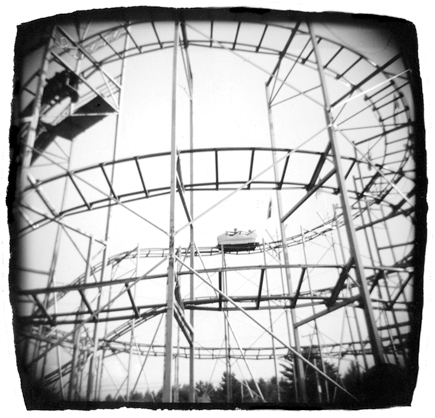 |
You’ll want to check out the Holgawood collection. What makes Holgawoods special is that they come in 10 different colors and are named after famous Hollywood icons and include a collectible story card to go along with each name. For example, there is a blue Holgawood, which is known as the Blooze Brothers, and a white Holgawood known as Casablanco. If the bug has bitten you, there is a boxed collection of all 10 available!
There are 35mm and 120 Holga cameras available. The 120 Holgas come with two plastic masks to create either 6x4.5cm or 6x6cm images. You can extend the versatility, as well as the number of single images made by the 120 Holga, by adding a 35mm film adapter kit or a fisheye lens.
Lomographic Society Cameras
If you wanna act foolish, use the Holga. If you wanna go crazy, then you need a Lomographic camera—any Lomographic camera. The original Lomo LC-A Compact Automat camera was made by the former state-run optics manufacturer LOMO PLC of St. Petersburg, Russia. This camera made its first appearance in the ’80s and was loosely based upon the Cosina CX-1. The design was picked up by an Austrian firm which continued to make the LC-A until 2005 when they replaced it with the LC-A+, made in China instead of Russia.
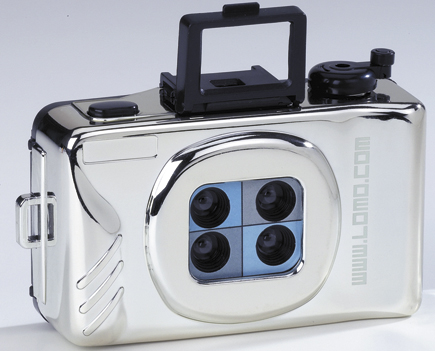 |
|
|
In order to foster their own unique approach to photography, which could be best described as photographic anarchy, the Austrian-based Lomo camera company established the ubiquitous Lomographic Society, which encompasses and encourages the use of all low-tech cameras, not just their own. The motto of the Society is “don’t think, just shoot” which presumes spontaneity while de-emphasizing formal technique. Indeed the hallmark of Lomo-style photos are oversaturated colors, off-kilter exposure, blurring, “happy accidents,” and alternative film processing.
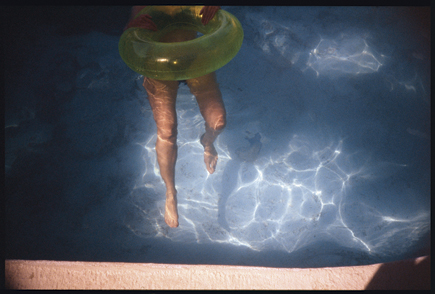 |
|
|
Anyone can join the Lomographic Society by enrolling on their website, www.lomography.com. Once you become a member you can join the worldwide community that includes thousands of photographers who share their low-tech images on the Society’s website and compete in online competitions. In no time at all you will be as weird and wacky as the rest of the Society members.
- Log in or register to post comments


































